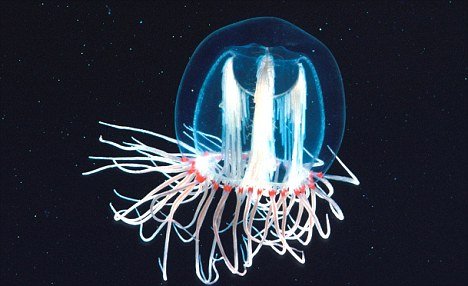You do not age because of time, but because of a process called Senescence, which the process of Cell Deterioration as your cells split over and over and over and over. Not everyone who is 20 years old has the same Biological Senescence rate. For example, a 60 year old could theoretically have the same Senescence rate as a 20 year old. The reason Senescence happens is because as your Cells split your DNA also splits. So every time a new Cell is made, your DNA is ripped apart. In order to not lose any of itself in this process, your DNA has what are called Telomeres. Telomeres exist at the ends of your DNA so that when your DNA splits you lose some of the Telomere instead of some of the DNA, but as your Cells split over and over and over, the Telomeres become shorter and shorter, causing Senescence. There are a few Animals that do not go through Senescence, and these Animals are known as Biologically Immortal. Examples are Lobsters, Jellyfish, Hydra & some Bacteria and Yeast, all of which can very easily live over 100-200 years in the wild and in some cases much longer. The Turritopsis Nutricula Jellyfish is considered to be truly Immortal.

Research into Life Extension and Immortality is closely linked to Cancer Research, in fact most Scientific Research in general right now is focused on DNA. But Life Extension and Cancer Research are almost one in the same in that Genomic Cancer Research has a lot to do with the fact that Tumors/Cancer are Immortal.
http://www.ncbi.nlm.nih.gov/pubmed/15862745
http://www.ncbi.nlm.nih.gov/pubmed/11481865
Papers about Telomeres in Cancer and Aging
http://www.ncbi.nlm.nih.gov/pmc/articles/PMC3001316/
http://www.ncbi.nlm.nih.gov/pubmed/11121233
http://www.ncbi.nlm.nih.gov/pmc/articles/PMC3370421/
http://www.ncbi.nlm.nih.gov/pmc/articles/PMC3370415/
http://www.ncbi.nlm.nih.gov/pubmed/12803478
http://www.ncbi.nlm.nih.gov/pubmed/11327115
http://www.ncbi.nlm.nih.gov/pubmed/11672984
These Papers are about Telomeres in Cancer
http://www.ncbi.nlm.nih.gov/pmc/articles/PMC79678/
http://www.ncbi.nlm.nih.gov/pmc/articles/PMC125790/
This Research Paper shows how DMSO (a common Solvent) can be used to Inhibit Telomerase. Telomerase is an enzyme that adds Nucleotides to Telomeres, effectively extending them. So Inhibiting Telomerase effectively limits the lifespan of Cancer cells.
http://www.ncbi.nlm.nih.gov/pubmed/9680092
These Papers explain Telomerase in Aging
http://www.ncbi.nlm.nih.gov/pmc/articles/PMC4734847/
http://www.ncbi.nlm.nih.gov/pmc/articles/PMC3901610/
hTERT is one of the most important Targets in this Research. This Paper explains how using hTERT, Human Cells can be Immortalized
http://www.ncbi.nlm.nih.gov/pmc/articles/PMC3449956/
These Papers explain the role of hTERT in Telomerase function and Cancer
http://www.ncbi.nlm.nih.gov/pubmed/19127107
http://www.ncbi.nlm.nih.gov/pubmed/16508638
This paper explains the roles of hTR and hTRT in Telomerase function and Cell Immortality
http://www.ncbi.nlm.nih.gov/pubmed/9398860
This paper explains a Molecule called Cycloastragenol, which has been shown to activate Telomrase
http://www.ncbi.nlm.nih.gov/pubmed/25095809
This Paper shows how Cycloastragenol can supress Lung Damage
http://www.ncbi.nlm.nih.gov/pmc/articles/PMC3597721/=
These Papers explain Telemorization, which has been shown to create Immortal Cells
http://www.ncbi.nlm.nih.gov/pubmed/12816049
http://www.ncbi.nlm.nih.gov/pmc/articles/PMC2743981/
Antisense means, having a sequence of nucleotides complementary to (and hence capable of binding to) a coding sequence, which may be either that of the strand of a DNA double helix that undergoes transcription, or that of a messenger RNA molecule. Something that can do this is called an Antisense Agent. Examples are 2-MOE and 2-5A, here is a book about Antisense Drug Technology
Here are some Papers that explain Antisense in Cancer Treatment
http://www.ncbi.nlm.nih.gov/pubmed/12489851
http://www.ncbi.nlm.nih.gov/pubmed/12867066
http://www.ncbi.nlm.nih.gov/pubmed/14663487
Another important factor in all of this is a new field of Research known as Epigenetics. Epigenetics shows that your DNA can actually change based on different factors, and these changes in DNA over the course of your life can actually be passed down.
Here are some Papers that give an Overview of Epigenetics
http://www.ncbi.nlm.nih.gov/pmc/articles/PMC1392256/
http://www.ncbi.nlm.nih.gov/pmc/articles/PMC2791696/
http://www.ncbi.nlm.nih.gov/pmc/articles/PMC3752894/
http://www.ncbi.nlm.nih.gov/pubmed/20944598
http://www.ncbi.nlm.nih.gov/pmc/articles/PMC3035853/
http://www.ncbi.nlm.nih.gov/pmc/articles/PMC3134032/
And most Medical Research is focused on DNA at the moment, so Regular Doctors and Oncologists, etc, will be more willing and ready to look into things like this than anything else. But unlike the research I posted over the last couple of days, none of this is going to wake anyone up from a Coma or fix anyone's Brain.
Posts like this
https://steemit.com/biohacking/@marsresident/neurogenesis-neuroprotectants-and-synaptogenesis
https://steemit.com/biohacking/@marsresident/brain-balance
https://steemit.com/biohacking/@marsresident/building-muscle-tissue
https://steemit.com/biohacking/@marsresident/the-church-of-neuroscience-and-biohacking
https://steemit.com/biohacking/@marsresident/building-brains
great post!
it will take a while to go through all these papers. i have read that mice do not age by telomere shortening but by oxidative stress. are you aware of other animals that age by this process? thanks for the post.